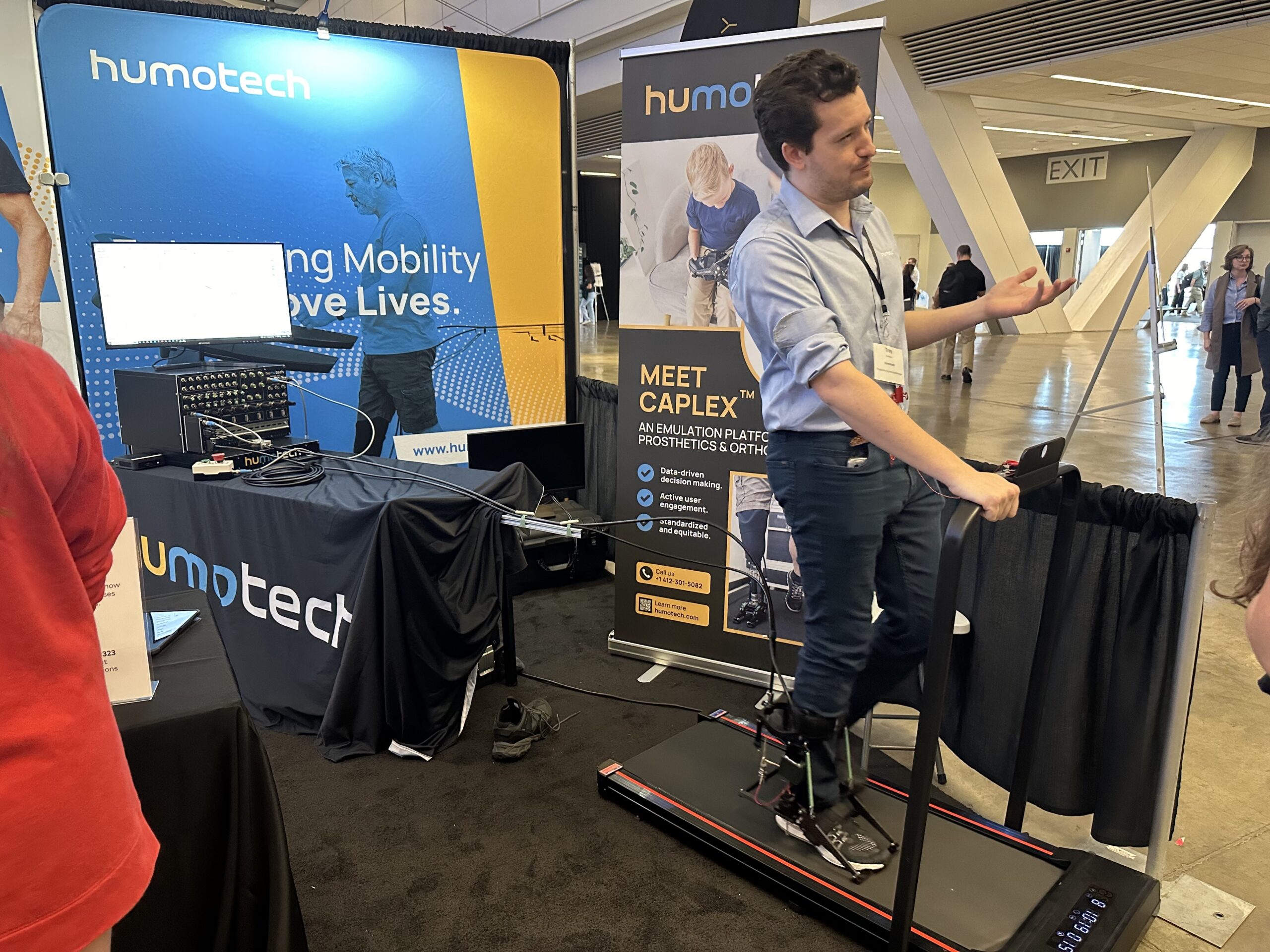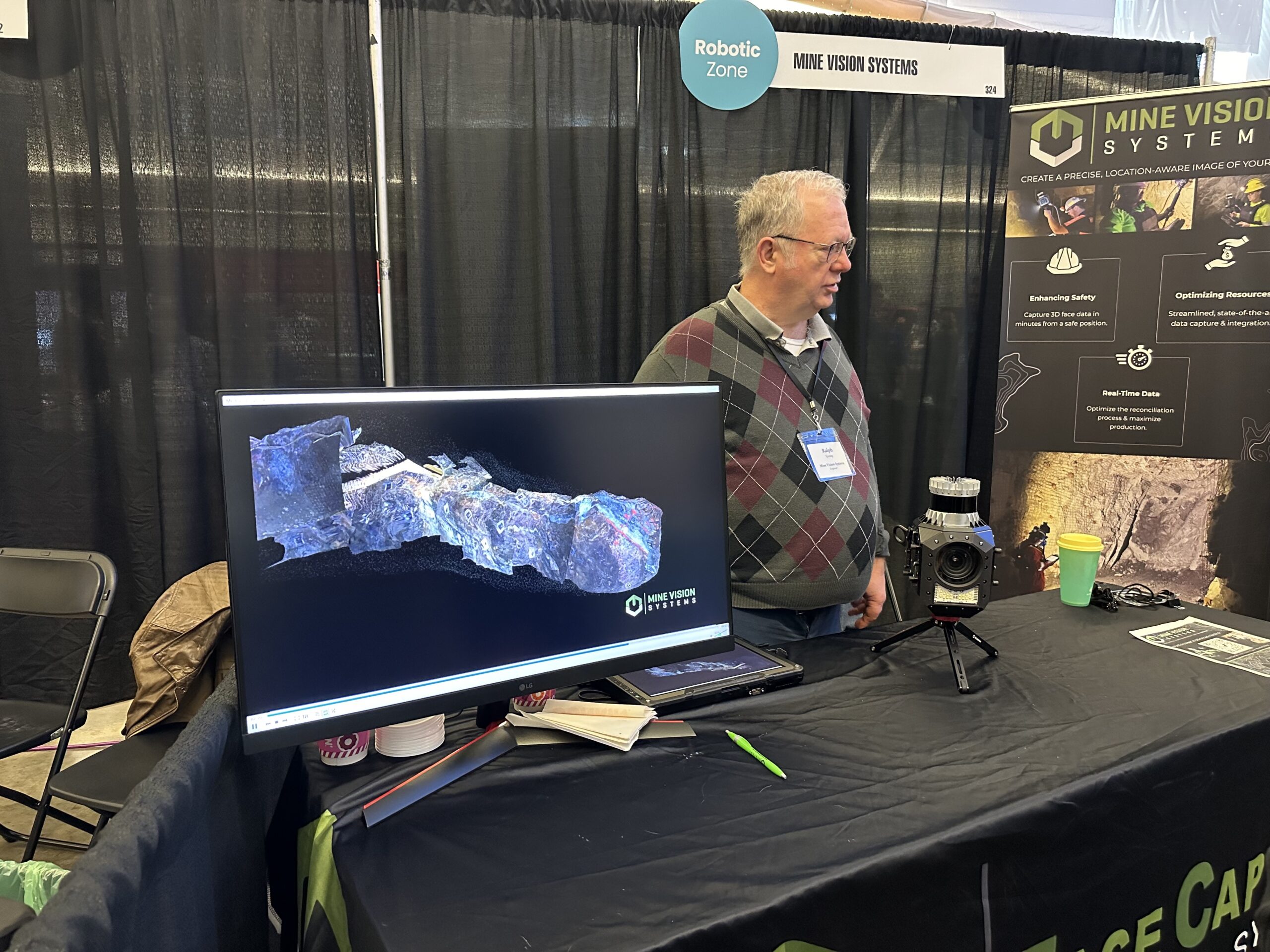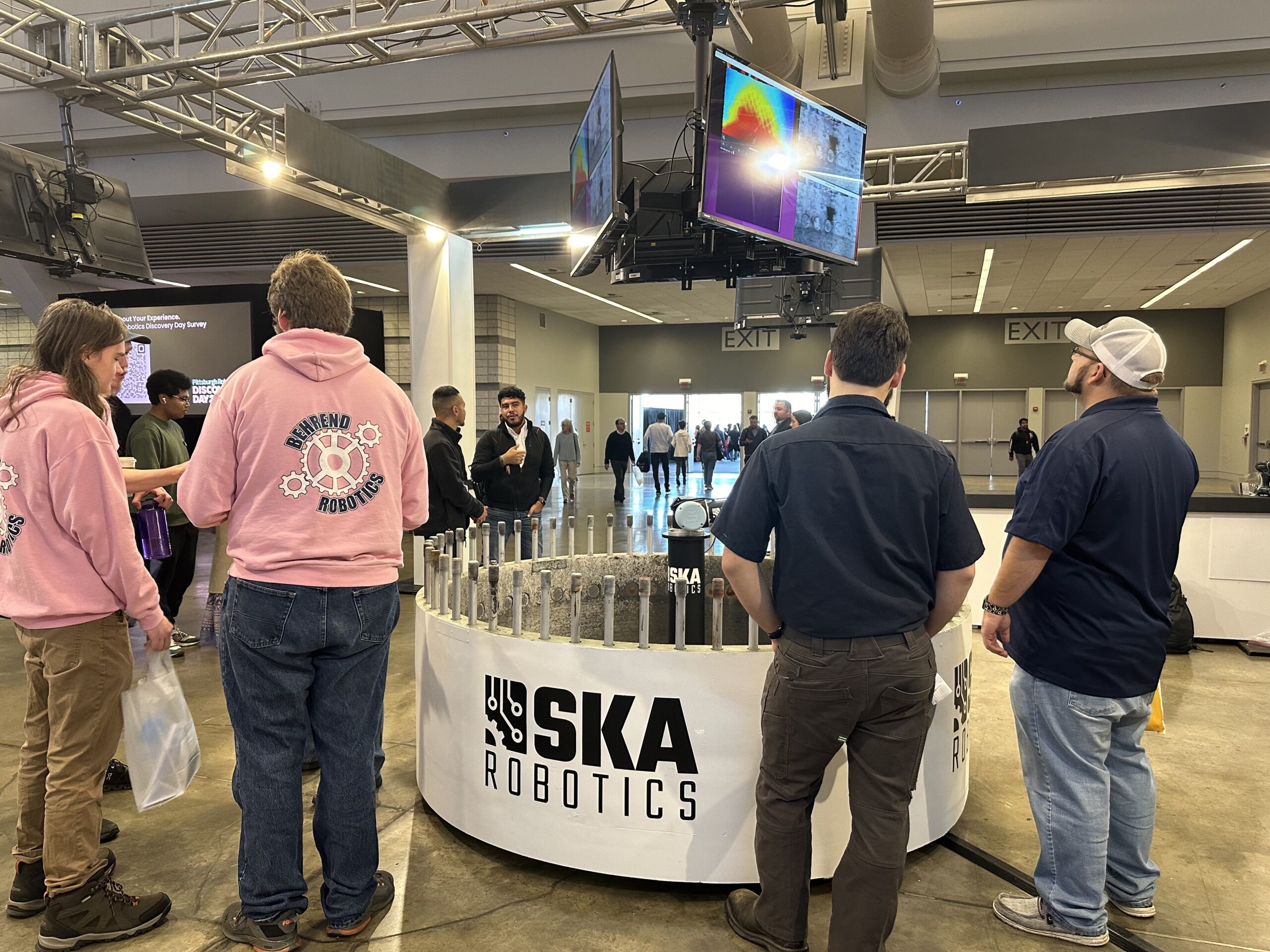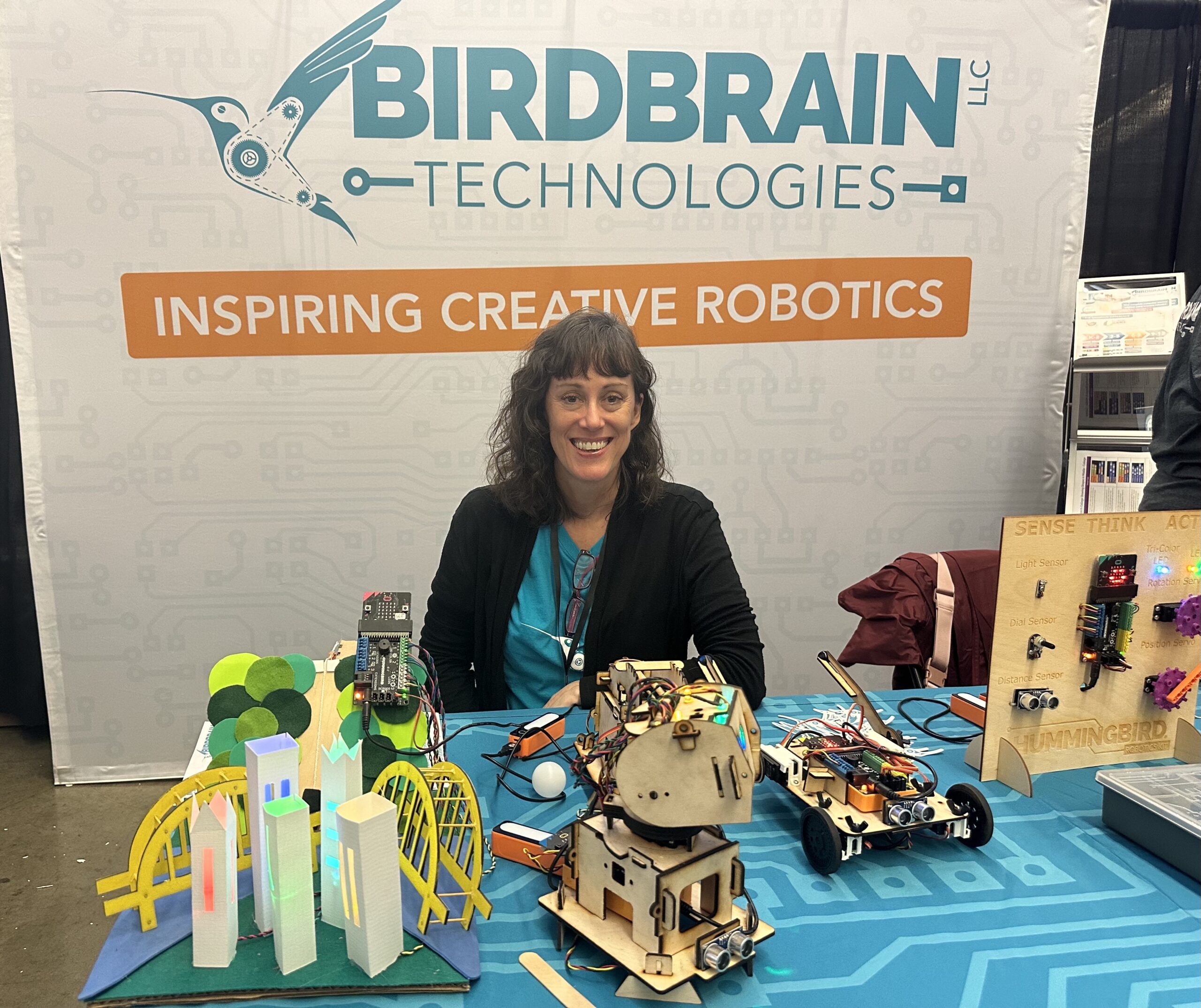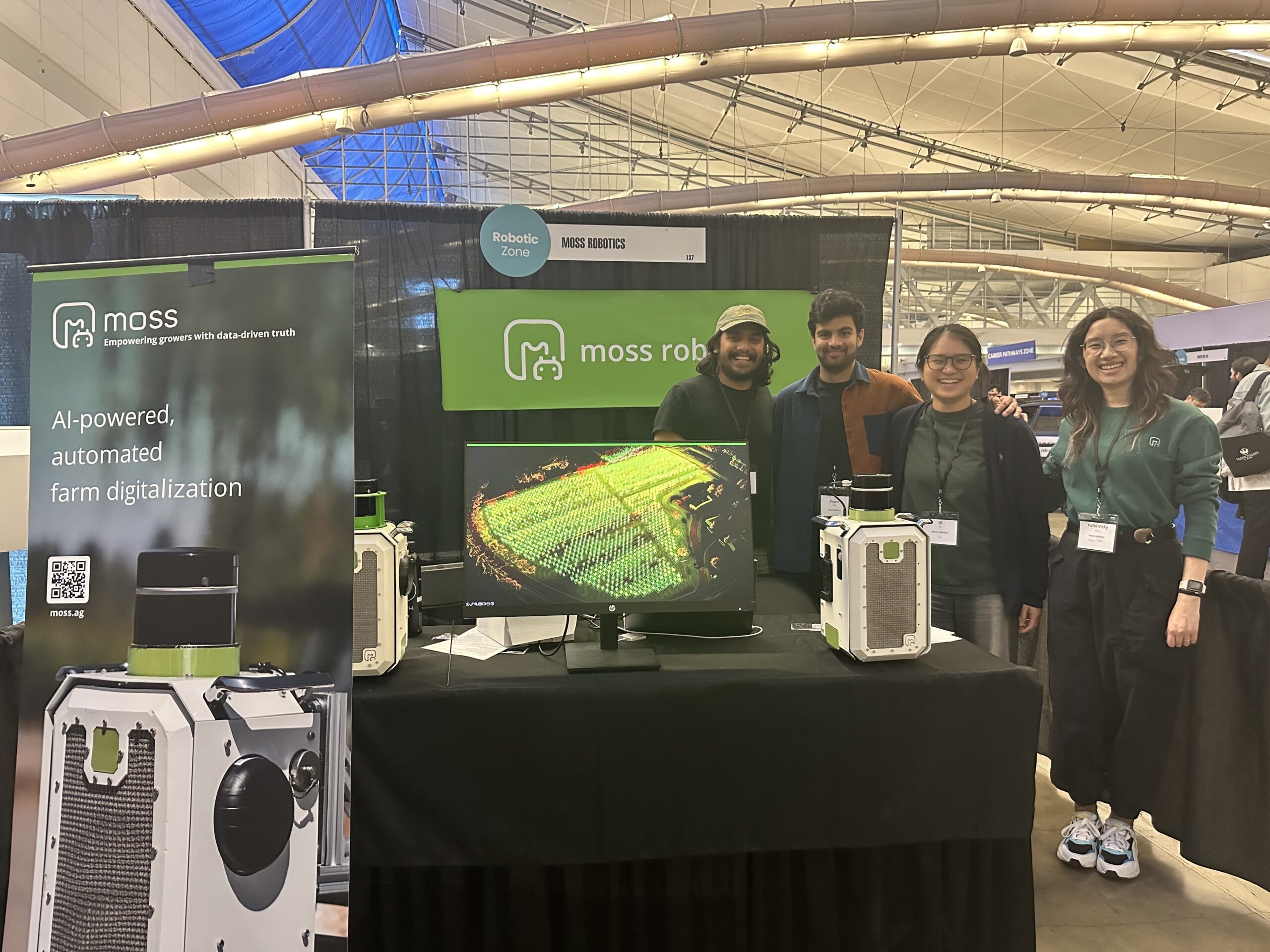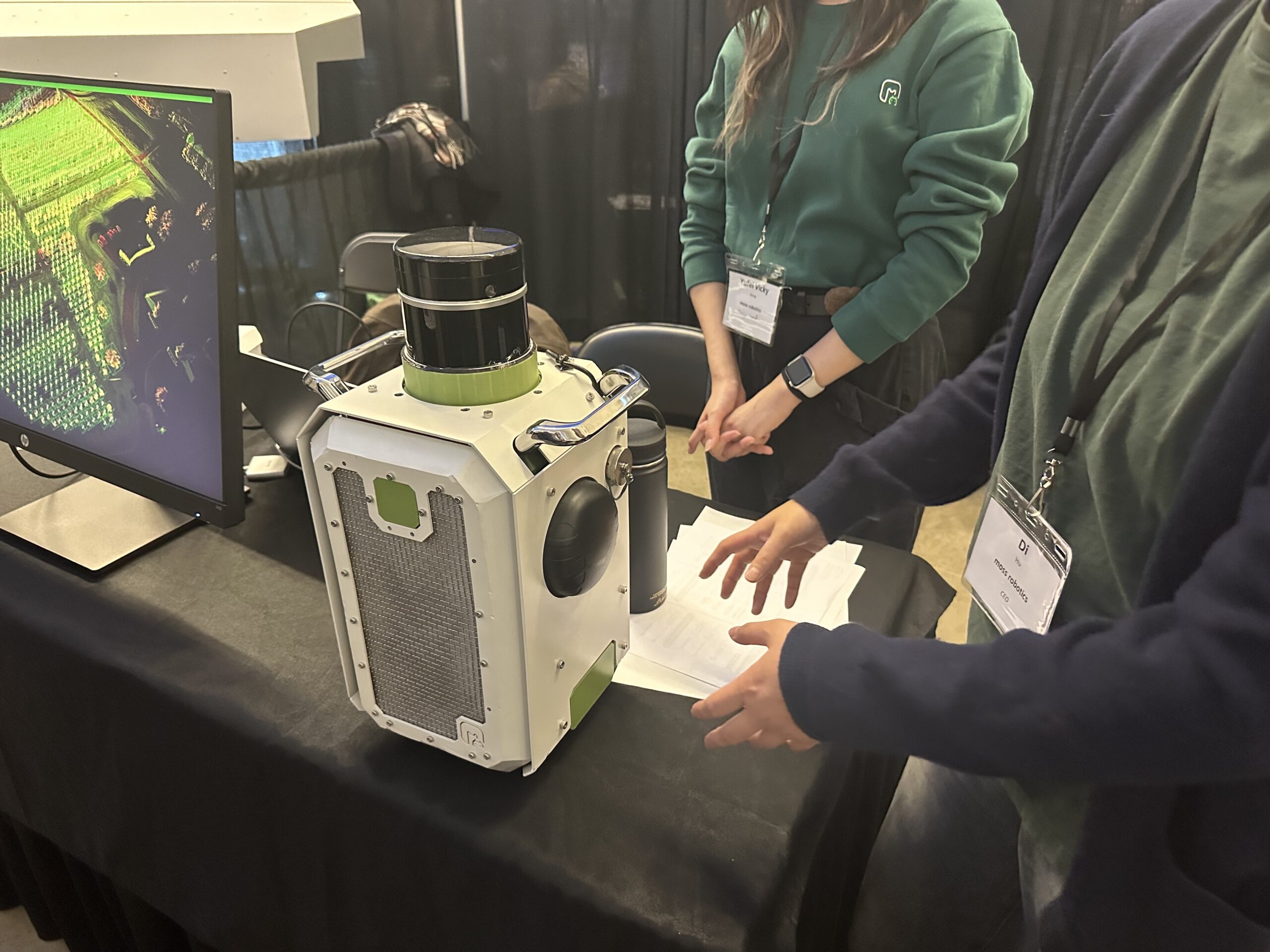
The New Economy Collaborative of Southwestern Pennsylvania announced a $62.7 million Build Back Better grant toward workforce development in Southwestern Pennsylvania. Follow Technical.ly’s coverage of the 11-county project here.
The way humans live, move and work is rapidly evolving — and Pittsburgh is at the forefront of making it happen.
At the third annual Pittsburgh Robotics Discovery Day last week, upwards of 6,000 people got to see some of the proof for themselves. Thanks to advancements in robotics, AI and automation, manufacturers can make dangerous tasks safer, healthcare is becoming more efficient and infrastructure evaluations are shifting from manual inspections to data-driven analyses.
Organized by Pittsburgh Robotics Network (PRN), the event showcased over 130 exhibitors across 18 different industries, with panel discussions and updates on the region’s investments in workforce development and startup acceleration.
“What’s happening here today is something that’s going to keep happening for years to come,” PRN Executive Director Jennifer Apicella said at the event. “Pittsburgh is at the forefront of it and you all have a front row seat.”
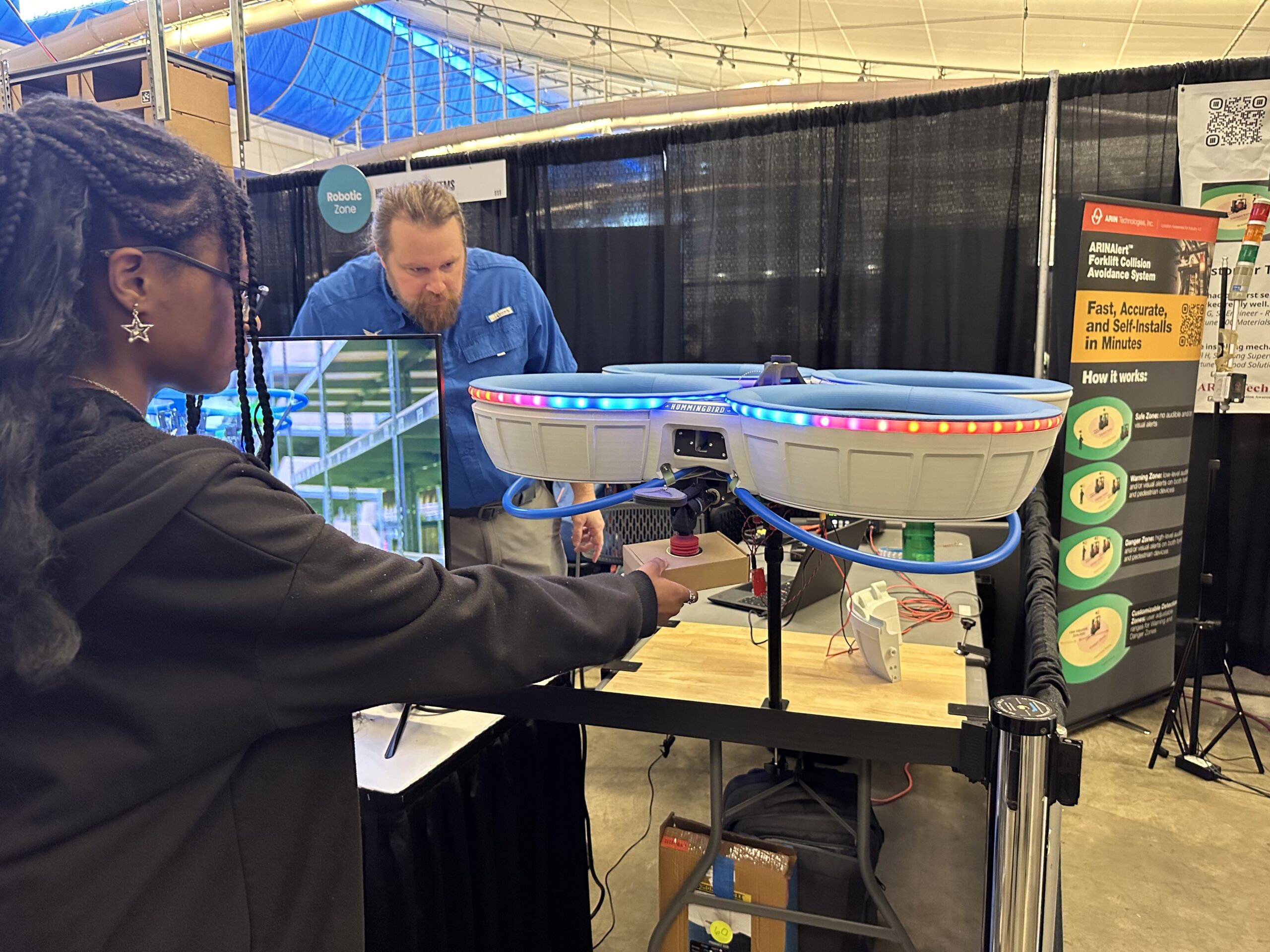
Also on display was the New Economy Collaborative’s (NEC) continued deployment of $62.7 million in federal funds throughout Southwestern Pennsylvania. Across five projects and in collaboration with over 90 organizations, the NEC uses funds from the Build Back Better grant to further the region’s workforce development, advanced manufacturing adoption and accelerate robotics startups.
Last year, the NEC deployed nearly $16 million of federal funds to support the region’s five projects. Since the program began in 2022, the NEC estimates it has used less than half of the $62.7 million grant and over $50 million of additional investment has been deployed in the region, according to the NEC’s recent annual report.
With these funds, the NEC has trained over 2,500 students, conducted nearly 150 tech assessments and helped nearly 1,200 businesses with robotics adoption and automation. Before the program officially ends in September 2026, the coalition aims to foster new partnerships and improve the region’s economy with the remaining funds.
Startups supported by the NEC, along with other companies in Pittsburgh’s tech ecosystem, were on display at Discovery Day. Here’s a look at some of the innovative startups and products showcased at the event.
ForSight Assistive Devices
ForSight Assistive Devices, a startup focused on improving mobility for the blind, showcased a prototype of its navigation aid device Pathfinder. This wearable technology uses 3D sensors to scan the environment and map users’ surroundings. When obstacles are detected nearby, the device alerts the wearer through vibrations, providing feedback on the location of objects and helping the user navigate the space.
Cofounder Lyman Petrosky said a 50-year-old episode of Star Trek inspired him to create the device. The 1968 episode ‘Is There in Truth No Beauty?’ featured a blind character who wears clothing made with sensors that convert visual information into tactile feedback, allowing her to navigate her surroundings.
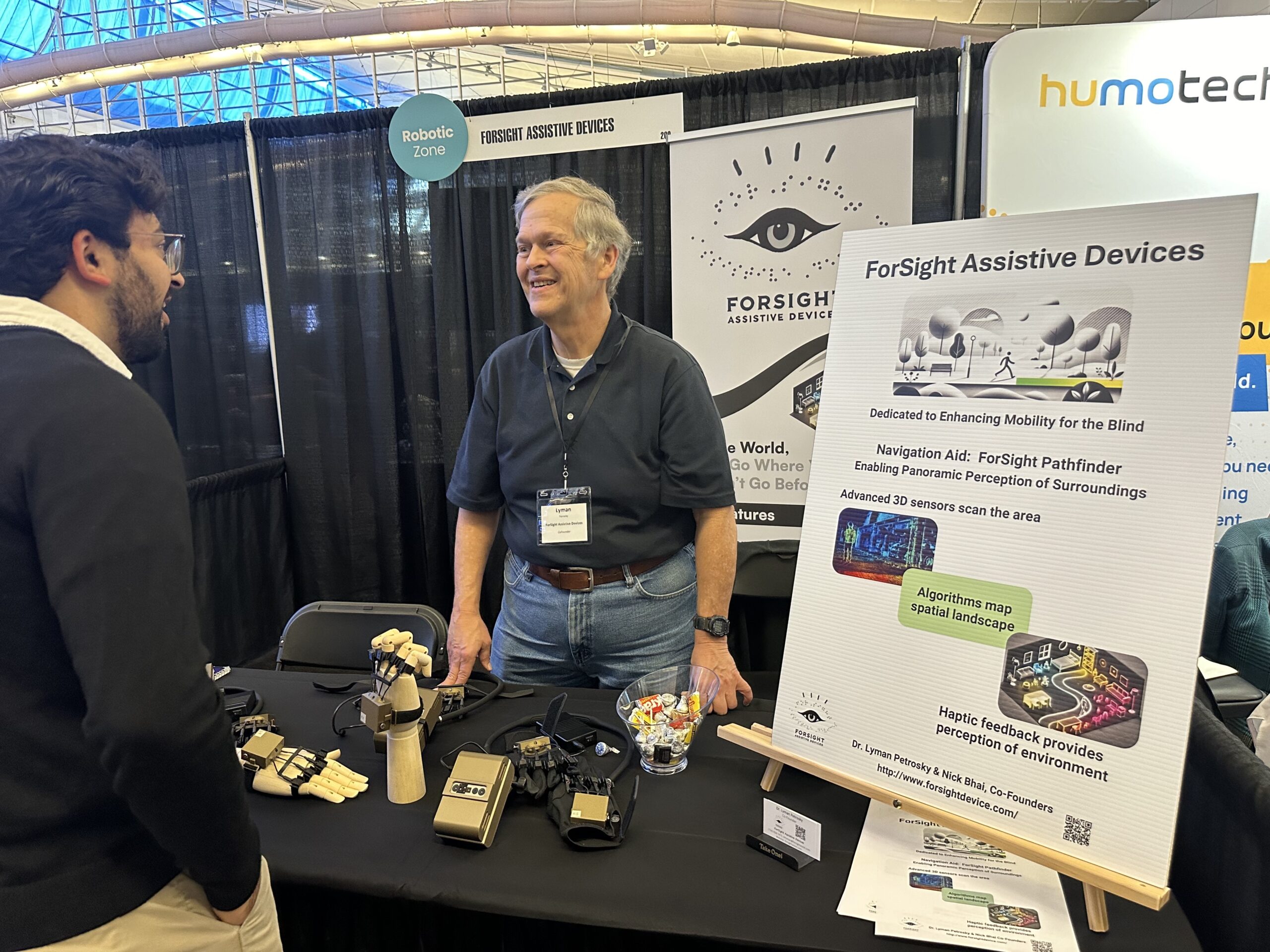
“It’s been a dream for 50 years and now technology is making it possible,” Petrosky told Technical.ly.
The startup aims to bring the device to market next year with plans to develop Pathfinder into other wearable devices in the future, Petrosky said.
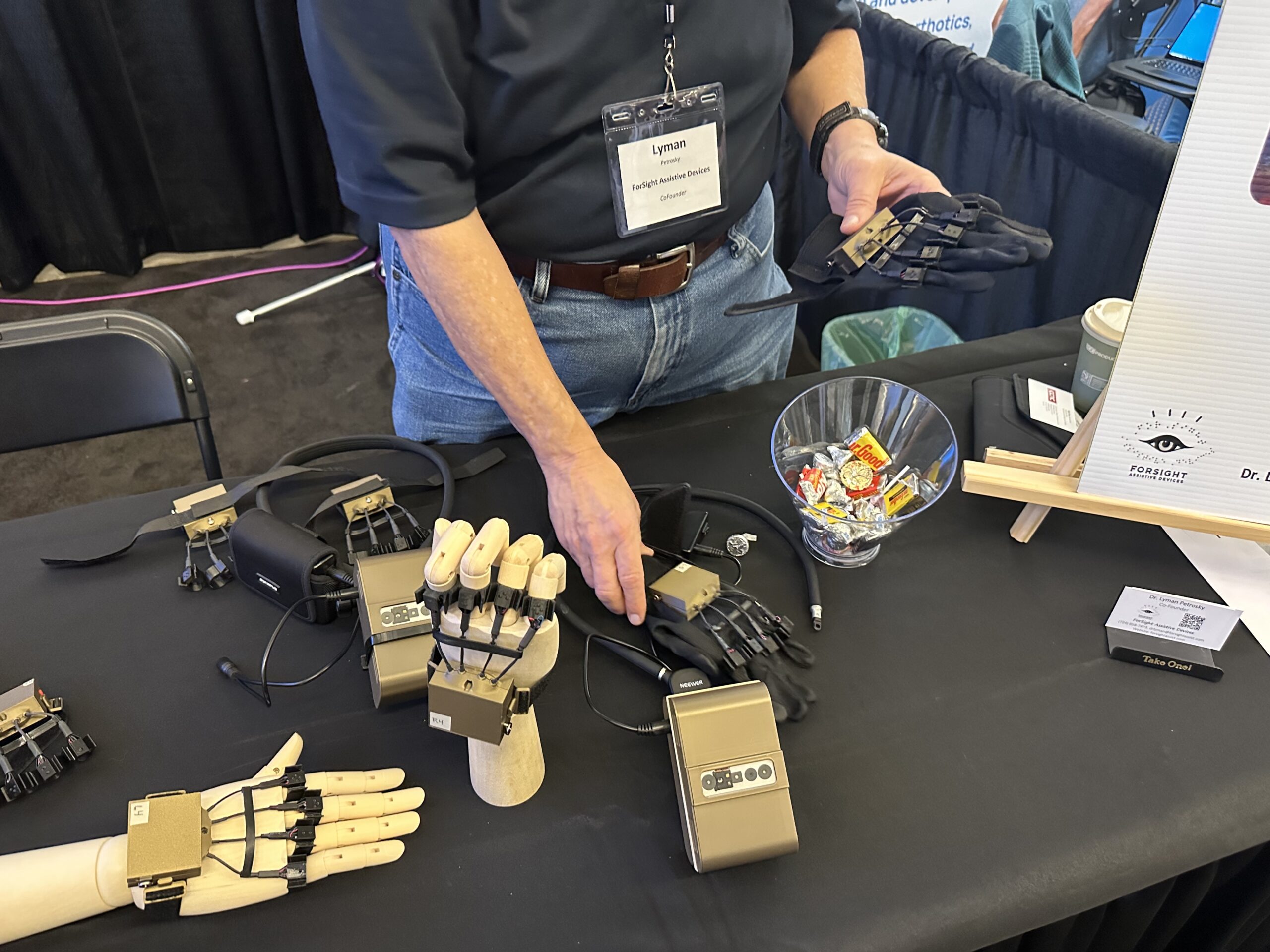
Agility Robotics
Agility Robotics’ Digit, a humanoid robot that uses AI to perform tasks, is currently working in warehouses across the US.
Standing at 5 feet 9 inches tall, Digit can lift boxes up to 35 pounds and work for two hours on a one-hour charge. It currently works in fenced-off areas away from humans in warehouses owned by Amazon, GXO, Spanx and others, but this could change soon with the upcoming release of a new Digit model, Solutions Engineer Yves Daoud said at Discovery Day.
The 8-year-old company is currently developing an updated version of Digit, set for release in 2025. This upgraded model will be able to lift 50-pound boxes and work for up to four hours on the same one-hour charge. The new Digit may also operate more closely with human workers.
“We’re always working on upgrades,” Daoud told Technical.ly, “and improvements are on the way.”
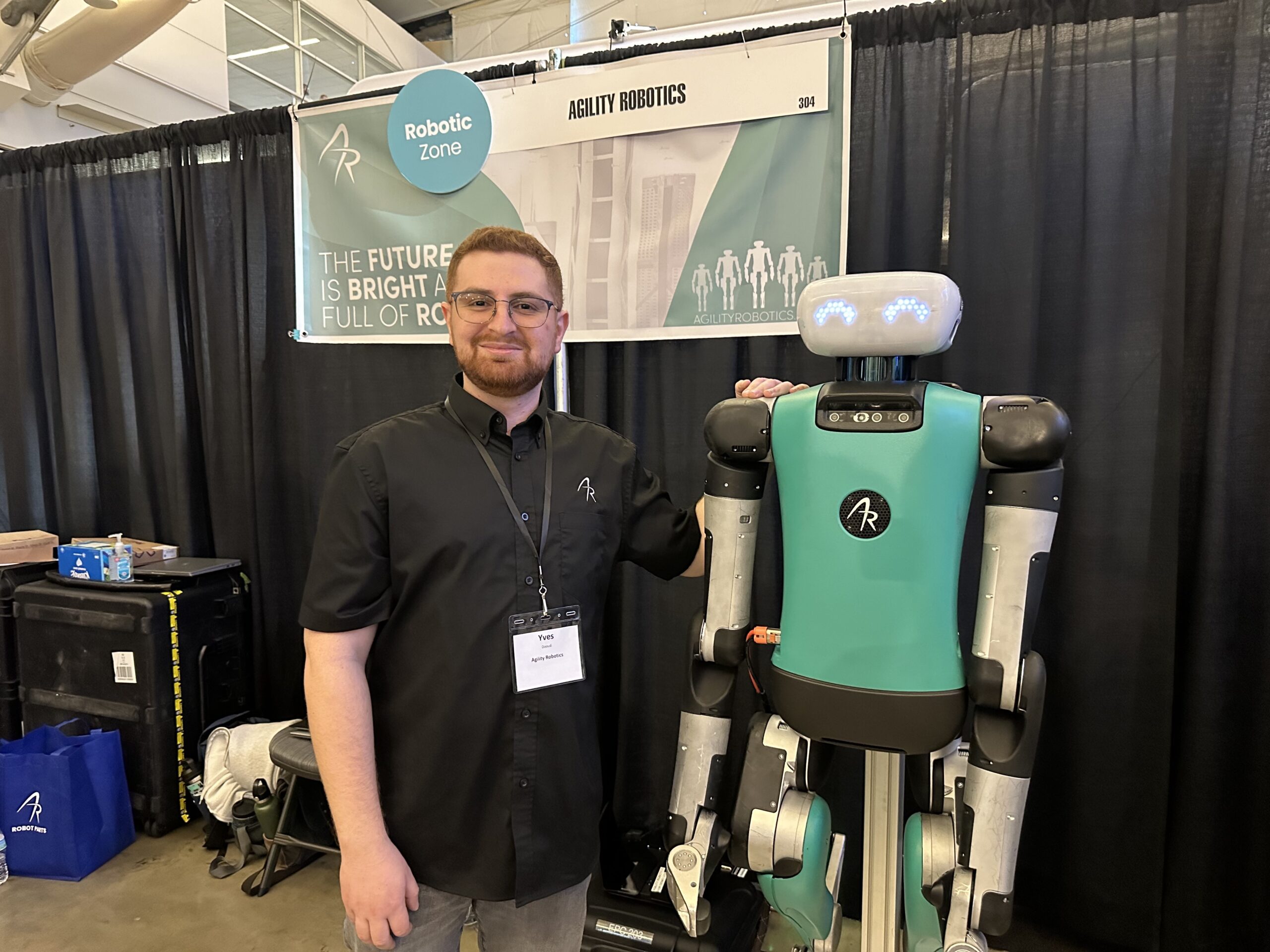
Hellbender
Hellbender, a three-year-old robotics company specializing in AI-powered hardware that understands visual information and interprets its surroundings, is known for creating devices for other companies, including Velo AI’s Copilot, a bike-mounted system that monitors a cyclist’s surroundings. Hellbender is also the primary design partner for tech company Raspberry Pi.
Now, it’s focusing on itself.
“We’re maturing as a company,” Chief Business Development Officer Brett Phillips told Technical.ly, “and beginning to build our own products.”
Hellbender showcased its new product at Discovery Day: a muli-camera device that can interpret visual information using AI. The device captures visual information in 3D, mimicking human depth perception.
After about two years of development, the device has multiple potential uses, including autonomous driving, robotics and surveillance. For example, it could serve as a virtual manager at a drive-through, Phillips said. If the camera detects increased car volume, it could automatically alert the kitchen to prepare more food and restock items.
Hellbender currently has just 10 units of the device and is focused on scaling production while actively raising funds in a Series A round.
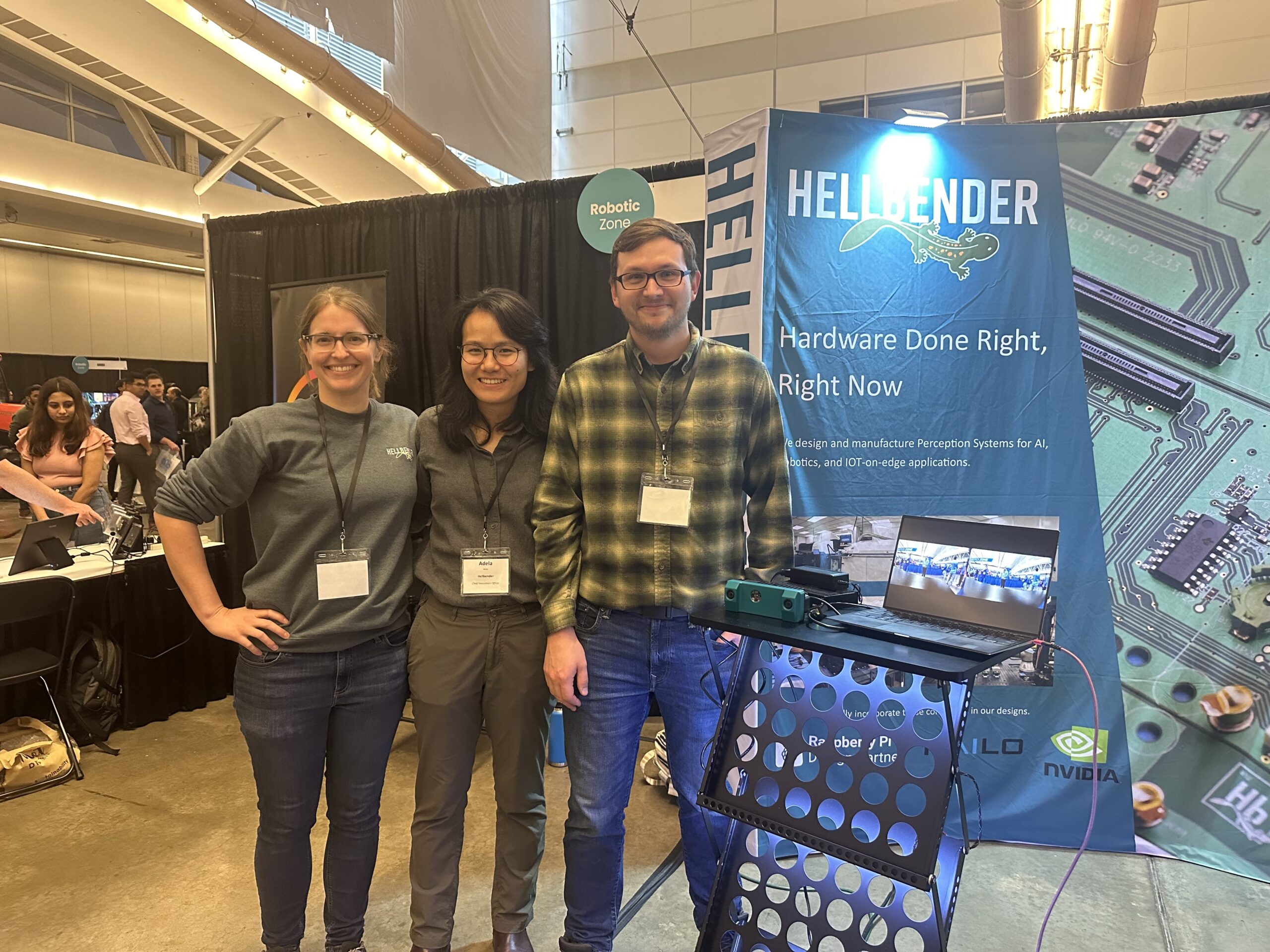
More startups at Discovery Day
- Humotech – This healthtech startup is developing wearable devices that collect patient data to help identify the most suitable prosthetics for an individual’s needs.
- Mine Vision Systems – A spin-out from CMU’s National Robotics Center, this startup uses 3D scanning to visualize mines and eliminate the need for geologists to gather data manually.
- Ska Robotics – This robotics company specializes in custom engineering projects for industrial inspection and maintenance, focusing on simulating inspections and detecting issues like corrosion. The company is working to miniaturize its technology.
- BirdBrain Technologies – With a mission to make robotics more accessible, this edtech startup offers interactive kits that bring hands-on robotics learning into the classroom.
- Moss Robotics – Founded by recent CMU graduates, this agtech startup developed an AI-powered robotic sensor that analyzes fields to provide data farming practices. The device has already been sold to nearly a dozen farmers worldwide.
Keep scrolling for more photos from the event.
